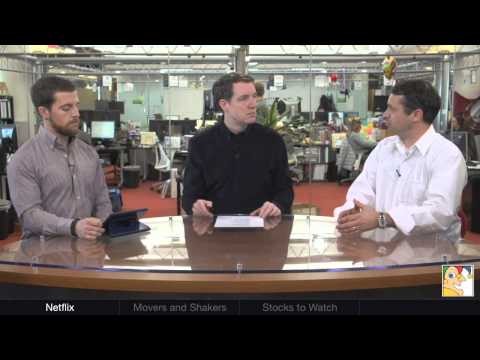Investing Resources Pettir
Post on: 15 Апрель, 2015 No Comment

A Framework for Successful Investing
2520for%2520Investing.jpg /%
Mastering investment framework is primary element contributing to accomplishment of your investment success. This framework shows major steps in managing your investment that, in turn, will become an investment roadmap to achieve your financial objectives.
It would be wise if you pay off your credit card balance and set aside assets for emergency before put your excess fund into an investment. Emergency fund should cover three to six months of living expenses.
Know Your Investment Goals
Identifying each of your investment goals is the starting point of your investing process. You have to know exactly your financial needs; so you can construct your investment specific to each goal, as well as organize your various investment accounts into several groups based on that multiple needs. Read more A Framework for Successful Investing
Investment Risk and Return
2520return%2520concept.gif /%
Risk refers to the degree to which an investor may lose his or her investment. Return refers to how an investment performs; that is how much it gains or loses over a period of time.
Different types of asset classes, such as stocks, bonds, and money market securities, have varying levels of risk and return potential. Generally, the higher the potential return on an investment, the higher the risk involved in pursuing that return. This is called risk/return tradeoff. While some people can handle the equivalent of financial rollers-coaster, others are terrified to climb the financial ladder without a secure harness. Deciding what amount of risk you can take while remaining comfortable with your investments is very important. Read more Investment Risk and Return
Risk Measure: Standard Deviation
Standard deviation is probably used the most to measure security’s risk. Standard deviation is a statistical term that is computed using the annual rate of return of a security to provide a good indication of the security’s volatility. It simply quantifies how much a series of security’s returns varies around their mean, or average.
Standard deviation is a way of putting a security’s performance swings into a single number, regardless whether the security delivers good or bad return. The more a security’s returns fluctuate from month to month, the greater its standard deviation, the riskier the security is. Standard deviation contains both systematic (market) and unsystematic (specific) risk. Read more Risk Measure: Standard Deviation
Risk Measure: Beta
Beta is a relative risk measurement, because it depicts a security’s volatility against a benchmark. It’s common that professionals calculate betas for stocks using the S&P 500 index as the benchmark. You should calculate betas using a security’s best-fit index.
Beta is fairly easy to interpret. The higher a fund’s beta, the more volatile it is relative to its benchmark.
- In theory, a beta of 1.0 means that the security moves in tandem with it’s benchmark. If the market goes up 10%, the security should go up 10%; if the market drops 10%, the security should drop by an equal amount.
- A beta that is greater than 1.0 means that the security is more volatile than the benchmark index. Say a security with a beta of 1.1 would be expected to gain 11% if the market rises by 10%, while a 10% drop in the market should result in an 11% drop by the security.
- A beta of less than 1.0 means that the security is less volatile than the index. For instance, a security with a beta of 0.9 should return 9% when the market went up 10%, but it should lose only 9% when the market dropped by 10%. Read more Risk Measure: Beta
Expected Market Volatility: A Way To Gauge Fear
During a bear market, especially the last quarter of 2008, Volatility Index has come under spotlight when financial news outlets invoked the index in their market commentary. Unfortunately most of the general public was blissfully unaware about it.

Volatility Index, known also as the VIX, was introduced by the Chicago Board Options Exchange (CBOE) in 1993 and later was revised in 2003 when the underlying securities was changed from S&P 100 Index to S&P 500 Index.
The CBOE describes the VIX as a key measure of market expectations of near-term “volatility” conveyed by S&P 500 stock index option prices. Put simply, the VIX measures the degree to which investors think stocks will swing vigorously in the next 30 days.
The VIX tends to surge on days when the market is expected to have significant swings, either plunging or skyrocketing. Put another way, the higher the VIX, the less investors know about where the stock market is headed. Nonetheless, a rising VIX is usually regarded as a sign that fear (bearish), rather than greed (bullish), is ruling the market. Hence, the VIX is often referred to as the fear index”. The VIX falls on days when stock prices are stable. Read more Expected Market Volatility: A Way To Gauge Fear
Low-Volatility Caveats
Fund managers are judged on whether their return beat benchmarks, which are the industry or the stock market average returns. But beating the average was not enough; it was possible to outperform in the short term, simply by taking a lot of risk.
Every investor knows that high volatility associated with an investment is a bad thing. The more an investment’s returns fluctuate from month to month, the greater its volatility, the riskier the security is. Big fluctuations also suggest fear, because they mean that investors are frantically changing their minds about what stocks are worth in the face of great uncertainty. On this ground, the CBOE volatility index, also known as VIX, is often referred to as the fear index”. Read more Low-Volatility Caveats
Volatility Index: Contrarian Indicator
According to an investor proverb, the time to buy stocks is when there is “blood in the streets.” The proverb has been attributed to Baron Rothschild centuries ago during the Panic of 1871 in Paris. During that time when everyone was selling, Baron Rothschild was buying.
Volatility Index, known also as the VIX, helps investors measure the blood in the streets. Peaks in the VIX are closely associated with market bottoms. That’s because climaxes of fear are times when everyone who’s ever going to sell has sold. And when all the sellers are out of the way, the buyers have the field all to themselves.
The VIX is a key measure of market expectations of near-term “volatility” conveyed by S&P 500 stock index option prices. Put simply, the VIX measures the degree to which investors think stocks will swing vigorously in the next 30 days. When option buyers are “fearful” that the S&P 500 index is going to have more large swings over the next 30 days, they will pay more for options contracts on the S&P 500 index to hedge their stock position. When option prices get inflated by expectations of high volatility, the VIX goes up. Hence, the VIX is often referred to as the fear index”. Read more Volatility Index: Contrarian Indicator
Gauging stock value using P-E ratios
Price-to-earnings ratio, also known as P/E or P-E ratio, is one of popular tools for investors to value stocks or stock market indices, whether their prices are cheap, expensive, or fairly valued. Long-term, value investors use the P-E ratio to get indication whether stocks are cheap enough to make them start buying.
The following graph shows the S&P 500 normalized trailing P/E (10-year price/earnings) ratios based on Yale economist Robert Shiller’s (Irrational Exuberance) stock valuation metric for a period starting from 1926 up to September 2009.
The P-E median over the 82 years is 15.68, while the average is 16.34. The ratio stood at 19.35 at the end of September 2009. The record overvaluation of 44.2 happened in Dec. 1999.














